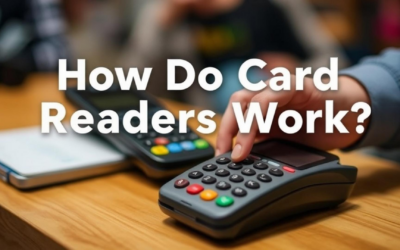How remittance advice keeps your business transactions on track
Managing payments across multiple transactions can quickly become chaotic and lead to errors. Remittance advice offers a straightforward solution, providing a clear record of payments that keeps both sides in sync. By incorporating remittance advice into your financial processes, you can enhance accuracy and avoid potential misunderstandings. Here’s how this simple tool makes a big difference.
What is remittance advice?
Remittance advice is basically a note that tells someone you’ve paid them. It’s a simple document that confirms a payment has been made, letting the payee know exactly how much they’re getting and what it’s for. Think of it as a receipt, but instead of showing what you bought, it shows what you paid for.
It’s role in business transactions
In the business world, this little document is pretty important. It helps keep everything organized and clear. For the person or company making the payment, it’s a way to say, “Hey, I’ve paid you!” And for the person receiving the payment, it’s a handy way to keep track of what’s coming in and why.
The difference between remittance advice and invoices
Now, here’s where it’s different from an invoice. An invoice is what you send when you want to get paid—it’s a request for money. Remittance advice, on the other hand, comes after the payment has been made, confirming that the money has actually been sent. It’s all about closing the loop and making sure everyone’s on the same page.
The key types of remittance advice
Paper-based remittance advice
Paper-based remittance advice is the old-school way of confirming payments. It’s a physical piece of paper that’s printed out and mailed to the payee. While more and more people are going digital, there are still times when a paper copy makes sense.
For example, in some government transactions or legal services, paper-based remittance advice is still the norm. It provides a solid, physical record that can be filed away—perfect for situations where a hard copy is required or simply preferred. Even in a digital age, some folks still like to have that piece of paper in hand.
Electronic remittance advice (ERA)
Electronic remittance advice, or ERA, is like remittance advice for the digital age. It’s sent through email or financial software, making the whole process quicker and easier. Businesses love ERA because it’s fast, reduces the chance of mistakes, and fits right into their digital workflows.
Key Tools for ERA:
- QuickBooks
- Xero
- Sage
These tools help ensure that payments are confirmed quickly and accurately, without the need to mess around with paper. Plus, everything’s stored digitally, so it’s easy to track and access whenever you need it.
As businesses continue to move towards digital solutions, ERA is becoming more and more common. It’s faster, more convenient, and it’s just a smarter way to handle payment confirmations in today’s fast-paced business world.
What does remittance advice include?
Remittance advice typically includes a few key details that are super important for keeping everything straight. Here’s what you’ll usually find:
Payer’s information
This is where you’ll see who’s sending the money. It’s got the name and contact details of the person or business making the payment.
Payee’s information
This tells you who’s getting the money, making sure it’s headed to the right place.
Payment amount
This part shows exactly how much money is being sent. It’s crucial to make sure the payee knows what to expect.
Invoice or reference number
This number links the payment to a specific bill or account. It’s what makes it easy to match up payments with what’s owed.
Date of payment
Finally, the date tells everyone when the payment was made, helping keep records in order.
Getting all these details right is important. If anything’s missing or incorrect, it can cause confusion or delays in processing the payment. Accuracy is key here, so everyone stays on the same page.
Top benefits of using remittance advice
Ensures accurate financial records
Remittance advice is a big help when it comes to keeping financial records accurate. It gives you a clear, detailed look at what’s been paid, which helps prevent any mix-ups.
When both sides have the same information, it’s easier to make sure everything adds up. This is crucial for any business because accurate records mean fewer headaches down the line when it’s time to balance the books.
Simplifies payment reconciliation
One of the best things about remittance advice is how it makes payment reconciliation easier. That’s just a fancy way of saying it helps you match up what’s been paid with what’s owed.
For businesses dealing with lots of payments, this is a lifesaver. Without remittance advice, trying to figure out which payment goes with which invoice can get messy. But with it, everything’s clearly laid out, making the process much smoother and faster.
Improves communication between payer and payee
Clear communication is key in any business deal, and remittance advice helps with that. It spells out exactly what’s been paid, when, and for what. This way, both the payer and the payee know exactly what’s going on. It cuts down on confusion and helps avoid misunderstandings.
When you’re dealing with multiple invoices or big transactions, having that clarity makes everything run more smoothly. It’s all about making sure everyone’s on the same page, which leads to better business relationships.
How to send remittance advice
Sending remittance advice can be done in a few different ways, each with its own benefits depending on the situation.
Via email
Email is one of the fastest and most efficient methods for sending remittance advice. It’s instant, allows for easy record-keeping, and can reach the recipient no matter where they are. Plus, it’s environmentally friendly since there’s no need for paper.
Always ensure that the email contains all the necessary details and that it’s sent to the correct recipient. Double-check the information to avoid any confusion.
Via postal mail
While less common these days, sending remittance advice through postal mail still has its place. It’s particularly useful in situations where a physical document is required or preferred, such as in legal settings or with clients who aren’t as tech-savvy.
Make sure the remittance advice is printed clearly and accurately, and keep a copy for your records. Sending it via certified mail can also provide proof of delivery.
Using accounting software
Using accounting software to send remittance advice automates the process, saving time and reducing the risk of human error. Programs like QuickBooks or Xero can generate and send remittance advice automatically after a payment is made.
Set up your software to include all necessary details in the remittance advice. Regularly review and update the information to ensure it remains accurate.
When to use remittance advice?
There are several scenarios where sending remittance advice is particularly important, helping to ensure smooth and accurate transactions.
International payments
When dealing with international payments, remittance advice is crucial. It helps to clarify which invoices or accounts the payment is intended for, especially when dealing with different currencies or payment systems. This reduces the risk of errors and helps both parties keep track of cross-border transactions.
High-volume transactions
For businesses that handle a large number of payments regularly, remittance advice is essential. It helps to keep everything organized by clearly linking each payment to the corresponding invoice. This is especially important for companies that might be juggling multiple payments from various clients.
Large business payments
In significant financial dealings, remittance advice ensures that all parties involved are on the same page. Whether it’s a large corporate payment or a substantial transaction, remittance advice provides a clear record that can be referred back to if needed. This transparency helps to prevent misunderstandings and ensures that everything runs smoothly.
Best practices for managing remittance advice
Managing remittance advice effectively is key to maintaining clear and accurate financial records.
Use a consistent format
Consistency is crucial when it comes to remittance advice. Using a standard format makes it easier to track and record payments, ensuring that all necessary information is included every time.
Ensure all relevant details are included
Always double-check that every piece of required information is present in the remittance advice. Missing details can lead to confusion or delays in payment processing, so accuracy is vital.
Keep a clear record
Maintaining a clear and organized record of both sent and received remittance advice is essential. This helps in tracking payments and ensures that you have a reliable reference in case any issues arise.
Final words
Remittance advice plays a vital role in business transactions, ensuring clarity and accuracy in financial dealings. By adopting effective systems for managing and sending remittance advice, businesses can streamline their payment processes, reduce errors, and foster better relationships with their clients and partners. It’s a simple step that can lead to smoother, more efficient operations overall.
FAQs
What are the 2 types of remittance advice?
The two types are paper-based remittance advice, which is a physical document sent by mail, and electronic remittance advice (ERA), which is sent digitally via email or through financial software.
Who receives remittance advice?
The payee, or the person or business receiving the payment, gets the remittance advice to confirm that the payment has been made and to understand what the payment covers.
How do I get my money from remittance?
You receive your money directly through the payment method specified, such as a bank transfer or a check. The remittance advice simply tells you the payment has been sent.
Who provides remittance advice?
The payer, or the person or business making the payment, provides the remittance advice to the payee to confirm the payment details.
Can I cash a remittance advice check?
No, remittance advice itself isn’t a check; it’s just a notification of payment. To access the funds, you would need to cash or deposit the actual payment received, like a check or a bank transfer.







